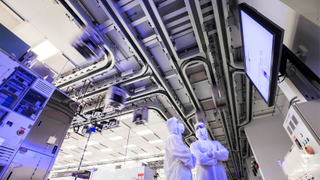U.S. government addresses critical workforce shortages for the semiconductor industry with new program
Anton Shilov is a Freelance News Writer at Tom’s Hardware US. Over the past couple of decades, he has covered everything from CPUs and GPUs to supercomputers and from modern process technologies and latest fab tools to high-tech industry trends.

Bloomberg reports that the program called a workforce partner alliance, will utilize a portion of the $5 billion allocated to the new National Semiconductor Technology Center (NSTC). The NSTC plans to distribute grants ranging from $500,000 to $2 million to up to 10 workforce development projects. Additional application processes will be launched in the coming months, and total spending will be determined after all proposals are reviewed.
Last year, the Semiconductor Industry Association (SIA) estimated that by 2030, there will be a shortage of 67,000 workers in the U.S. semiconductor industry. To avoid or at least minimize this issue, the U.S. government is initiating a program to develop the U.S. semiconductor workforce. This initiative aimed to prevent a labor shortage that could hinder domestic chip production, which is part of the general strategy to bolster the U.S. semiconductor industry with substantial federal funding.
Funding for this initiative comes from the 2022 Chips and Science Act, which earmarked $39 billion for U.S. chip manufacturing grants and $11 billion for semiconductor research and development. This act has prompted companies to commit significant investments that are expected to transform the global semiconductor supply chain and the U.S. semiconductor industry.
There is a pressing need for labor investment, as new chipmaking facilities might struggle without qualified personnel. In addition to the SIA’s gloomy prediction of an insufficient workforce in the semiconductor sector by 2030, even more pessimistic industry estimates (cited by Bloomberg) predict a shortfall of 90,000 technicians by 2030, a critical issue as the U.S. aims to produce 20% of the world’s most advanced chips by then.
The Semiconductor Industry Association anticipates that the U.S. chip industry will add nearly 115,000 jobs by 2030. By the decade's end, the workforce will expand from approximately 345,000 to 460,000. However, the labor market may have difficulty meeting this demand. According to SIA, with current rates of degree completions, about 67,000 of these projected new jobs — 58% — are expected to remain unfilled.
Since the enactment of the CHIPS Act, over 50 community colleges have introduced or expanded programs related to semiconductor technology. The largest recipients of the Chips Act manufacturing awards, including Intel, TSMC Samsung, and Micron, have each allocated $40 million to $50 million specifically for workforce development.
.png)



No comments:
Post a Comment